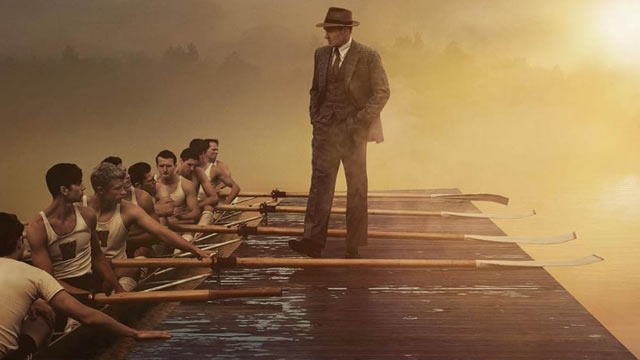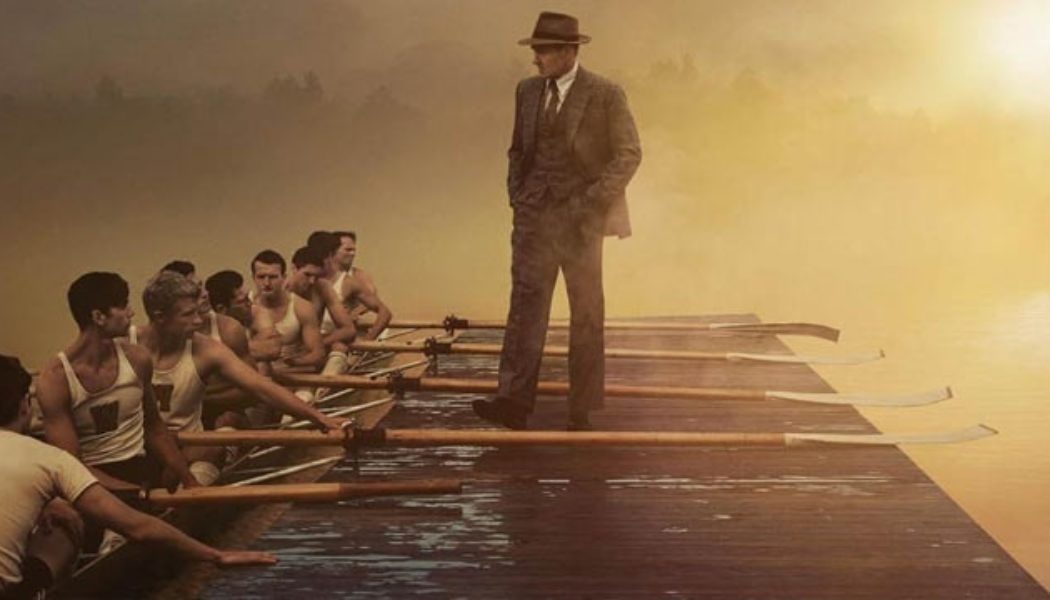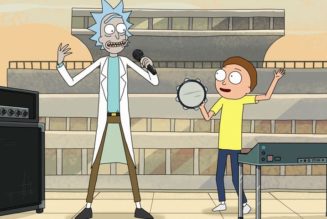
★★★
The Boys in the Boat is based on the New York Times bestselling nonfiction novel of the same name which was written by Daniel James Brown. This cinematic iteration is directed by George Clooney (The Monuments Men) and was written by Daniel James Brown and Mark L Smith (The Revenant). It stars Joel Edgerton (The King), Callum Turner (Fantastic Beasts: The Crimes of Grindelwald), Peter Guinness (Chernobyl), Sam Strike (Mindhunter), Thomas Elms (Spiral), Jack Mulhern (The Society), Luke Slattery (Night Music), and Bruce Herbelin-Earle (Free Rein).
The film is an underdog story set in the 1930’s, during the Great Depression. College student Joe Rantz (Turner) is barely scraping by when he is told he needs to pay the rest of his tuition in only a few weeks’ time. He scrambles until he finally finds a possible solution: make the school rowing team. Rowers get free room and board, and a much-needed paycheck. The team (including Rantz) proves to be a powerful crew and are thrust into the limelight. The eight junior varsity rowers suddenly have, not just the school or the country, but the entire world inspecting their every move.
The actors do a wonderful job with what they are given. It is unfortunate that the script doesn’t dive further into the personal trials and tribulations of the team members, which would have added to the depth of the film. The story is set around one boy in the boat, not multiple as the title suggests. As such, the audience is only treated to bits and pieces of their personal journeys. Some of the boys aren’t even mentioned at all.
Not only that, one of the personal demons Rantz has to deal with is his relationship with his estranged father. They have a run-in where Rantz is visibly distraught. Turner deftly shows his angst and frustrations through his actions and expressions, but those actions aren’t explained. After all, his team is succeeding, and he has proven himself to be talented at rowing. So why is he so angsty?
That being said, the cinematography is beautiful with interesting shots to vary the rowing scenes. The competitions are packed with conflict (although the tension in the first half of the movie could have ramped up a bit). Not to mention, the musical score complements each scene well.
One of the most intriguing aspects of period pieces like this is the placement of the film within or around bigger world events and how the characters react to them. In this instance, the Olympics take place in 1936, three years before Adolf Hitler sends German troops to invade Poland. The audience is eased into this setting slowly with the mention of the team going to the Berlin Olympics. At first, there is just one swastika-emblazoned flag in the background. But when the boys arrive in Berlin, the audience is dropped right into the heart of Nazi Germany. The images are alarming for audience members who know what was soon to happen. That causes intrinsic tension, seeing beloved characters enter a yet-to-be-dangerous setting, especially since the boys are oblivious to it all.
The Boys in the Boat is a drama and a tale about an underdog sports team. At times, it doesn’t know how to juggle both of those genres. It is heartwarming and inspiring, like most stories of working-class groups having to fight the preferential treatment of the upper class. While somewhat cliché, The Boys in the Boat is a great feel-good movie that can rouse viewers to either get in a boat or reach for their dreams.









